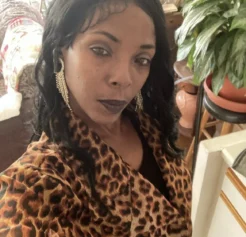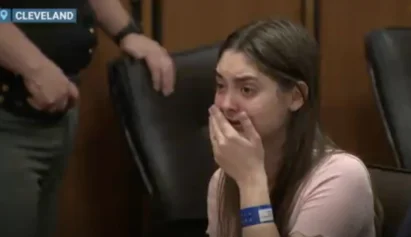Sullivan Walter, 53, of New Orleans, Louisiana was wrongfully convicted for a crime he did not commit at 17 years old, making him the fifth-longest incarceration of any juvenile in the United States. He was recently released from prison after 36 years behind bars — the fifth-longest wrongful incarceration of any juvenile in the United States — thanks to key evidence his lawyers say was in plain sight from the start.
“I’m overwhelmed with joy, but it’s also a bittersweet feeling because it took so long,” said Walter, who has since been exonerated.
Walter has spent all of his adult life incarcerated. His release from Elayn Hunt Correctional Center, just south of Baton Rouge, Louisiana, on Aug. 25, 2022, happened because the Innocence Project New Orleans gave his case a much-needed second look.
“My innocence was clear, I was an innocent man and I had been falsely imprisoned,” Walter said.
On May 9, 1986, a woman was raped after a man broke into her New Orleans home, and threatened to harm her and her 8-year-old son with a knife if she did not have sex with him. After the incident, the woman reported the rape to police. Court records indicate that four days after the rape, the woman assisted a police artist in making a composite sketch of the man who raped her. Meanwhile, Walter, who was 17 years old at the time and already in the crosshairs of police after an arrest for burglary, became an easy target.
“I continued to not cooperate and as a result of that, I was rebooked, charged with a rape charge and even then, I didn’t think it would be possible for me to be convicted of something I was accused of and had nothing to do with it,” Walter said.
“One of the officers with NOPD saw the composite drawing and said, hey, that looked like Sullivan Walter, let’s see if he fits the suspect rape case and it was an inadvertent misidentification by the victim of rape,” said Richard Davis, Legal Director of the Innocence Project New Orleans.
A month later in June 1986, the woman picked Walter’s photo in a suspect lineup and claimed he was her rapist. At trial the trial in December 1986, the woman stated, “there was no doubt Walter was the man that raped her” court records indicate, however, a criminalist expert who testified, said he tested the semen left behind by the rapist found it was from a ‘non-secretor’ meaning, the semen did not contain blood type contents, a rare condition considering 80% of men produce blood type contents within their semen according to court documents.
“My blood type showed that I was the total opposite, my blood type secreted, the perpetrator of the crime had been identified as someone whose blood type was rare and he was categorized as a non-secreter,” Walter said of the key evidence.
Despite this information being known, it was not presented to the jury at the trial, and Walter was sentenced to 39 years in prison, 35 years for the rape charge and four years for the burglary.
“Just being in prison alone and convicted of a rape charge, it’s a blemish, it tears you down, it destroys you,” Walter said of his wrongful conviction and subsequent three decades in prison.
Despite maintaining his innocence, Walter says he struggled to secure good legal representation to get his case reopened and the rape kit reexamined, until the Innocence Project New Orleans lawyers stepped in to get a local district attorney to review the case last year.
“What we’re used to in these wrongful conviction cases is some way the evidence is being concealed, but in this case, it was right there in the open,” said Richard Davis, Innocence Project New Orleans Legal Director.
Davis and the Innocence Project managed to get a judge to reexamine Walter’s case. The judge, Darryl Derbingny, “expressed anger that blood and semen evidence that could have cleared him never made it to the jury,” The Washington Post reported, and ordered Walter’s conviction be vacated.
“I’m not angry, I’m not looking for anyone to be punished but I would like for what is broken to be fixed,” Walter said of his exoneration and prison release.
Now freed from prison, Walter says he is ready to live the life he never got the chance to live. He says he plans to pay respects to family members he lost while incarcerated. “I don’t even know where to start from, but there are many things I want to do, there are places I need to go, I’ve lost my mother, I need to pay my respects to her remains,” he said.
Walter says he also wants to visit the Martin Luther King Memorial in Washington, D.C., and live out the rest of his life and maybe even become a father one day.
“I would like to visit the MLK statute because it’s engraved in that statue, injustice anywhere is a threat to justice everywhere,” Walter said. “I look forward to establishing myself and working and making an honest living,” he continued.
Fifty-six percent of the 551 DNA exonerations in the United States involved mistaken eyewitness identifications according to the Innocence Project New Orleans.


